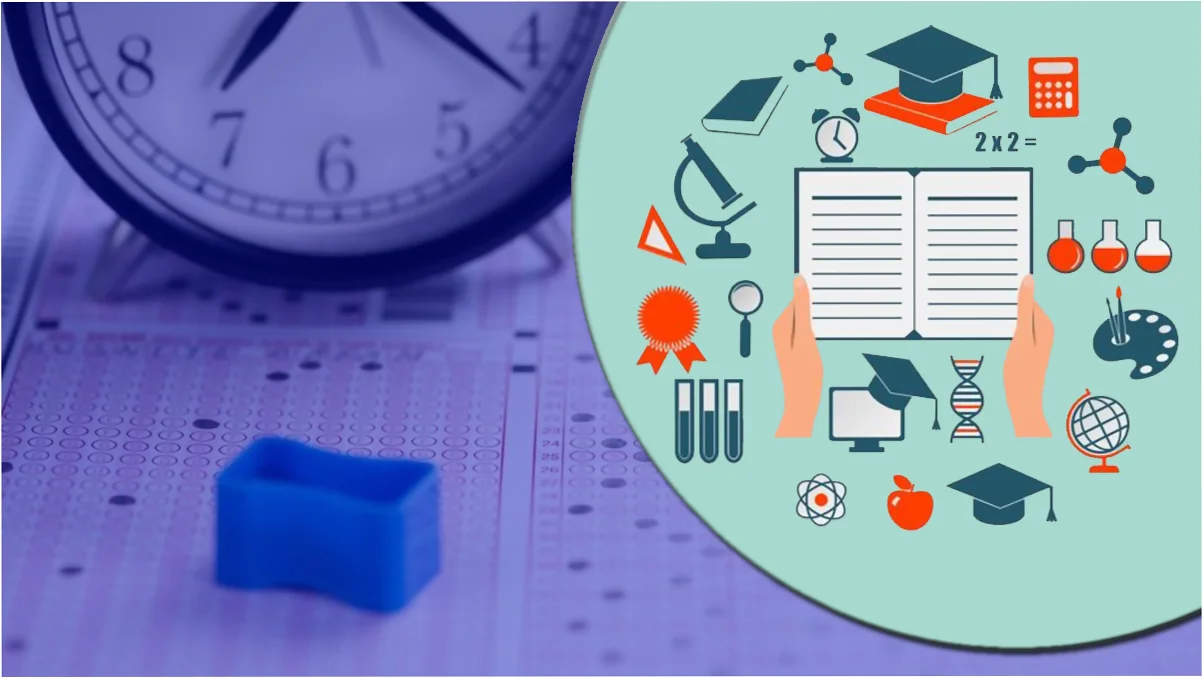UPSC Civil Services Exam: The preliminary round for the Civil Services test, which is one of the Union Public Service Commission’s (UPSC) examinations, is ready to begin the year-long selection process. Because the bells for the examination are about to ring, the final week of preparations should be productive.
The UPSC civil services test is considered one of India’s most prominent exams, with lakhs of students preparing for it each year. However, candidates who ace the exam have a conceptual and complete mastery of subjects, as well as a winning approach.
UPSC 2022 Prelims – Exam Pattern
UPSC Civil Services Preliminary Exam consists of 2 papers. Both the papers contain objective type questions. Marks obtained in only GS Paper-I are considered for selection in mains examination. Most of your focus should be on preparing for GS Paper-I but at the same time GS Paper-II should not be ignored. Following table shows the pattern of Prelims exam.
| Paper Name | No. of Questions | Maximum marks | Time | Negative marking | Remarks |
| GS Paper-I | 100 | 200 | 2 hours | 1/3rd | – |
| GS Paper-II (CSAT) | 80 | 200 | 2 hours | 1/3rd | Qualifying in nature (33 %) |
UPSC 2022 Prelims – Exam Syllabus
PAPER I
- Current events of national and international importance.
- History of India and Indian National Movement.
- Indian and World Geography-Physical, Social, Economic Geography of India and the World.
- Indian Polity and Governance – Constitution, Political System, Panchayati Raj, Public Policy, Rights Issues, etc.
- Economic and Social Development – Sustainable Development, Poverty, Inclusion, Demographics, Social Sector initiatives, etc.
- General issues on Environmental Ecology, Bio-diversity, and Climate Change – that do not require subject specialization General Science
PAPER II
- Comprehension
- Interpersonal skills including communication skills;
- Logical reasoning and analytical ability
- Decision-making and problem solving
- General mental ability
- Basic numeracy (numbers and their relations, orders of magnitude, etc.)
- Data interpretation (charts, graphs, tables, data sufficiency etc.)
If you want to pass this famous exam but are unsure about the approach or need a jumpstart on your UPSC study, here are five complete tactics that can help you pass the UPSC civil services prelims and main exams:
Recall The Concepts: UPSC Civil Services Exam
The most crucial challenge for applicants is to remember all of the ideas from general studies and the civil service aptitude test (CSAT). Every subject, from history to Indian politics, has ramifications. Give it your all throughout revisions and concentrate on the fundamentals because this will aid you in arriving at the correct answer through the elimination process.
Work On The Timeline
Many of the concepts in the syllabus may have been organised into a chronology. During the last week, your task is to thoroughly master them. Learning the topics according to the timeframe will not only make them easier to understand, but it will also save you time during revisions.
Read The Snippets In The NCERT Textbooks
We recognise that the last week will be crucial for Civil Services candidates, thus reading NCERT textbooks now is not a good idea. Reading the snippets in the NCERT textbooks, on the other hand, would provide you with a general comprehension of the topics. At least one fact can be found on each page. Set up some time for this activity, as direct queries are likely to arise.
Focus On the Current Affairs: UPSC Civil Services Exam
It is unnecessary to emphasise the importance of current events in the Civil Service. This section has no boundaries, and questions can come from anywhere. Apart from reading India Year Book, the best method to prepare for this section during the last week is to use your self-prepared notes. The India Year Book is published annually by the Ministry of Information and Broadcasting. Never go into too much depth about the principles because it will take up too much of your time. Make a mental note of the facts and figures presented in the India Year Book.
Keep The Facts On Your Fingers
Both concepts and figures will be used in the preliminary assessment. Reading facts and figures is not the same as mastering concepts. Because the major examination takes place offline, applicants can cope if they are unsure of the figures. In the preliminary round, however, this is not possible. During the final week of preparations, one should painstakingly grasp the facts and figures.





